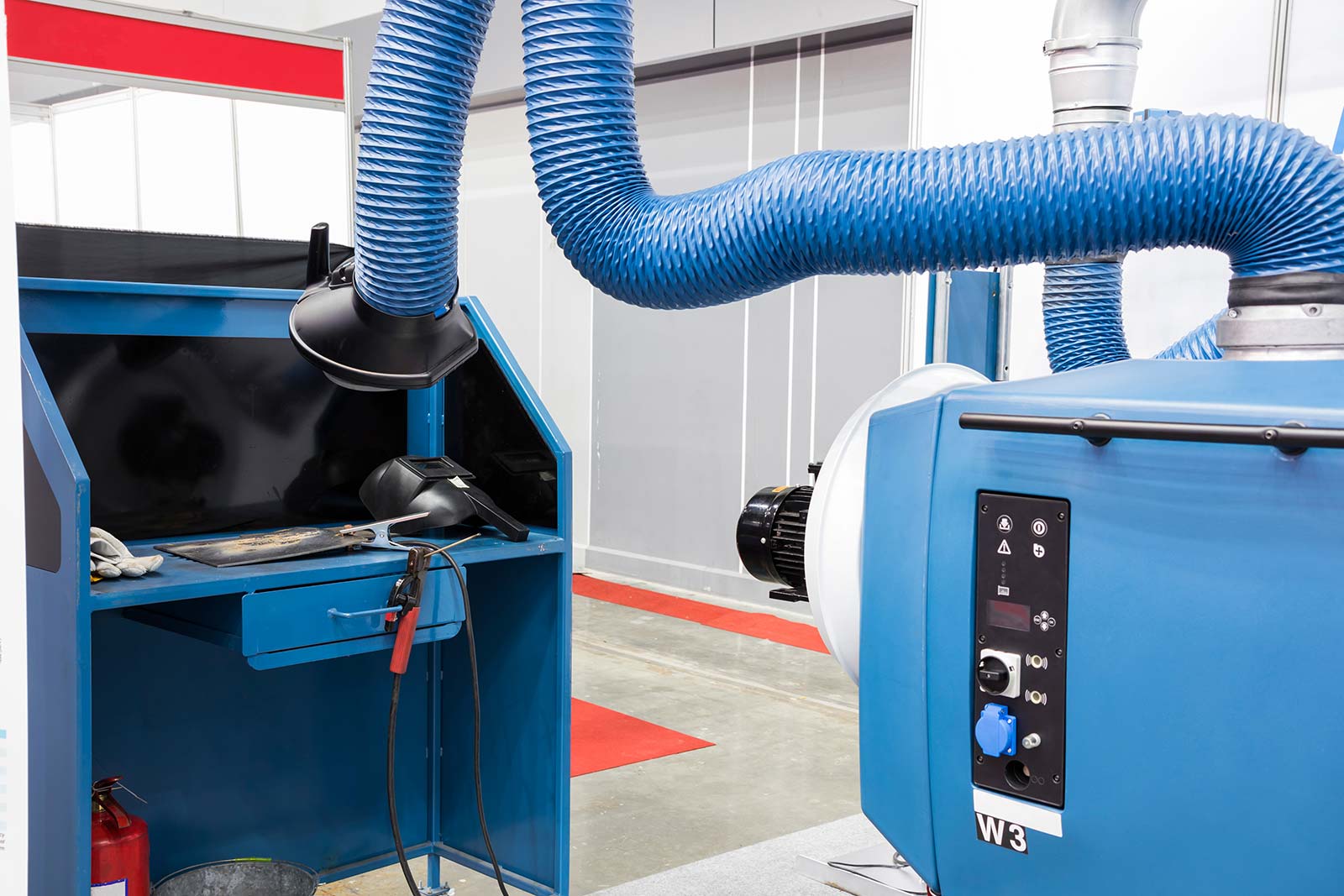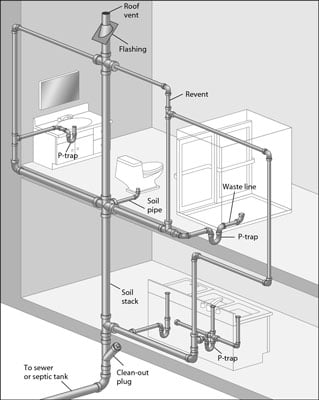Adequate Ventilation in Plumbing Systems: Why It Is Essential
Adequate Ventilation in Plumbing Systems: Why It Is Essential
Blog Article
Do you find yourself searching for advise on Why Plumbing Air Vents Are Important?

Correct air flow in plumbing systems is often forgotten, yet it is vital for preserving the functionality and security of your home's plumbing. Air flow assists manage atmospheric pressure, avoid the build-up of unsafe gases, and make sure the efficient removal of waste. In this overview, we will certainly explore the relevance of correct pipes ventilation, exactly how it functions, and the advantages it brings to your plumbing system.
Comprehending Ventilation in Pipes
Air flow in pipes describes the network of pipes that permit air to flow with the water drainage system. These vents serve several purposes, including managing atmospheric pressure within the pipes, protecting against sewer gases from entering the home, and helping in the smooth circulation of wastewater.
Just How Air Flow Works in Plumbing Systems
Air Pressure Guideline
Appropriate air flow keeps well balanced atmospheric pressure within the pipes system. When water moves via pipelines, it displaces air. Without appropriate ventilation, this variation can develop adverse pressure, leading to slow drains or siphoning of water from traps, which can trigger undesirable odors to seep right into the home.
Protecting Against Sewage System Gas Build-up
Among the most essential functions of plumbing vents is to prevent drain gases, such as methane and hydrogen sulfide, from collecting within the home. These gases can posture significant health risks and are very combustible. Vent pipelines permit these gases to get away securely outside.
Assisting in Waste Removal
Air flow aids in the efficient removal of wastewater by avoiding airlocks in the drainage system. When air can flow openly via the vents, it permits water and waste to stream smoothly through the pipelines, reducing the threat of blockages and backups.
Types of Plumbing Vents
Main Heap Vent
The main pile vent, additionally referred to as the air vent pile, is the primary air vent in a pipes system. It prolongs from the primary drain line up with the roofing system, permitting gases to escape and fresh air to enter the system.
Branch Vent
Branch vents connect to the major pile vent and serve individual components, such as sinks, bathrooms, and showers. These vents guarantee that each component has sufficient air flow to work correctly.
Air Admittance Shutoff (AAV).
An Air Admission Valve (AAV) is a one-way shutoff that allows air to get in the pipes system without the demand for a traditional air vent pipeline extending with the roof. AAVs are generally used in restorations or areas where mounting a basic air vent is not practical.
Indications of Poor Ventilation in Pipes.
Slow Draining Fixtures.
If your sinks, tubs, or toilets are draining pipes slowly, maybe an indication of inadequate ventilation. Poor air flow can produce a vacuum cleaner impact, making it hard for water to drain effectively.
Gurgling Sounds.
Gurgling noises originating from drains pipes are typically an outcome of air being drawn through water traps because of adverse stress in the pipelines. This is a clear indicator of insufficient ventilation.
Unpleasant Smells.
Drain smells inside your home are a warning that your pipes system is not effectively aerated. This can suggest that sewage system gases are not being adequately aired vent outside, bring about potentially hazardous problems.
Typical Air Flow Blunders.
Poor Vent Sizing.
Utilizing small air vent pipes can lead to bad air flow and pressure imbalances in the system. It's necessary to use vents that fulfill the details demands of your plumbing system.
Improper Vent Positioning.
Putting vents too much from the fixtures they offer can minimize their efficiency. Correct placement guarantees that air can move easily and successfully with the system.
Disregarding Code Demands.
Building codes supply specific standards for plumbing air flow. Ignoring these codes can lead to a system that falls short to function correctly and might lead to costly repairs or carcinogen.
Advantages of Appropriate Ventilation.
Boosted System Efficiency.
Effectively ventilated plumbing systems operate a lot more successfully, with less blockages, faster draining, and less stress on the pipes. This effectiveness prolongs the life expectancy of the plumbing system.
Improved Air Quality.
By avoiding sewer gases from entering your home, proper air flow adds to much better indoor air top quality, making your living setting healthier and much more comfortable.
Preventing Water Damage.
Adequate ventilation helps prevent water from being siphoned out of traps, which can lead to sewage system gases getting in the home and creating water damages in time.
Steps to Ensure Correct Air Flow.
Consulting Plumbing Codes.
Always speak with regional plumbing codes when developing or changing your pipes system. These codes supply the essential standards for proper airing vent and ensure your system meets safety and security criteria.
Routine Examination and Upkeep.
Regular evaluations can assist determine prospective air flow problems before they end up being major problems. Maintenance jobs, such as cleansing air vent pipelines and checking for blockages, are important for maintaining the system in good working order.
Specialist Installment.
For new setups or major adjustments, it's a good idea to employ a professional plumbing technician. They have the experience to make certain the air flow system is properly developed and installed according to code.
Verdict.
Correct ventilation is a crucial component of any kind of plumbing system, making sure that it operates efficiently and securely. By recognizing the significance of air flow, identifying the indications of bad ventilation, and taking steps to keep your system, you can avoid expensive concerns and protect your home's air quality.
4 Things You Should Know About Your Plumbing Vents
What Plumbing Vents Are
Also called a vent stack, a plumbing vent is a vertical pipe attached to your drain line that runs through your roof. The plumbing vent pipe, or plumbing air vent, removes gas and odors from your plumbing system and allows fresh air to enter the pipes, helping the water to flow out of the drain pipes.
What Plumbing Vents Do
Plumbing vents have two basic functions. One of which is to allow unpleasant smelling wastewater and sewer gasses to escape your plumbing system instead of entering your home. Plumbing vent pipes are typically located on roofs, away from windows, to ensure the fumes exit the home completely.
The other function of the plumbing vent is to move fresh air into your plumbing system. This helps move water through every plumbing fixture in your house, like toilets and sink drains. Think of the way in which you need to let a little air into the bottle as you pour soda in order to make the drink flow smoothly.
Different Types of Plumbing Vents
True vent: This is the most common vent option. In simplest terms, a true vent is a vertical pipe attached to your drain line that exits through the roof. They often function as the main vent that other fixtures can connect to. Re-vent pipe or auxiliary vent: Attached to the drain line near specific plumbing fixtures, re-vent pipes run up and over to connect to the main vent. Common vent: Two plumbing fixtures installed on opposite sides of a wall are typically tied into the vent stack using something known as a sanitary cross. Wet vent: This venting option operates as a drain pipe and a vent at the same time. Wet vent drainage systems drain water from one fixture while venting the air from another. Although they’ve been used for over 100 years, wet vent systems have only recently been added to the plumbing code in many areas. If you’re planning on installing one in a bathroom remodel, make sure you check your local code prior to construction. Loop vent: For free-standing fixtures like kitchen island sinks, loop vents are ideal. These vent pipes run under the floor, rise from the P-trap, and create a loop inside the cabinet sink. Air admittance valve: An AAV is a one-way mechanical valve typically installed at the site of the plumbing fixture. AAVs allow venting to occur without having to tie into a larger venting system. They’re ideal for venting fixtures where you aren’t able to easily connect to an existing vent system. Common Plumbing Vent Issues
Although vent pipes typically don’t have water flowing through them, they’re still subject to many typical plumbing issues. For example, clogs are one of the most common problems associated with sewer vent pipes. If your vent pipe gets clogged, all of your plumbing fixtures tied into the vent stack will be affected.
A sink with a slow drain that bubbles and gurgles or a strong sewage smell around your toilet are both indicators that your toilet vent pipe is clogged. Because most vent pipes exit through the roof, old leaves, twigs or even a bird’s nest could be clogging the pipe.
Clogs in your vent pipe system cause a buildup of negative pressure, meaning that water won’t be able to flow out of your home very well. It’s similar to putting your finger over the opening of a straw to trap water inside. When you remove your finger, the water is able to flow out of the straw.
If you suspect you have any blockage in your vent, make sure you have a professional come examine the situation. Left unchecked, a blocked air vent can lead to other costly repairs, like leaks and sediment buildup.
Under Pressure
Pipe vents are essential aspects of a home’s plumbing system. Owning a home means learning about all sorts of things you never put much thought into before. But by understanding as much as you can about the important systems of your home, you can keep those budgets intact and those anxiety levels low.
https://www.homeserve.com/en-us/blog/home-improvement/plumbing-vents/

As an avid reader on Why Plumbing Air Vents Are Important, I was thinking sharing that post was beneficial. Make sure you take a moment to share this page if you appreciated it. I recognize the value of reading our article about What Is A Plumbing Vent & How Do They Work?.
Click Here Report this page